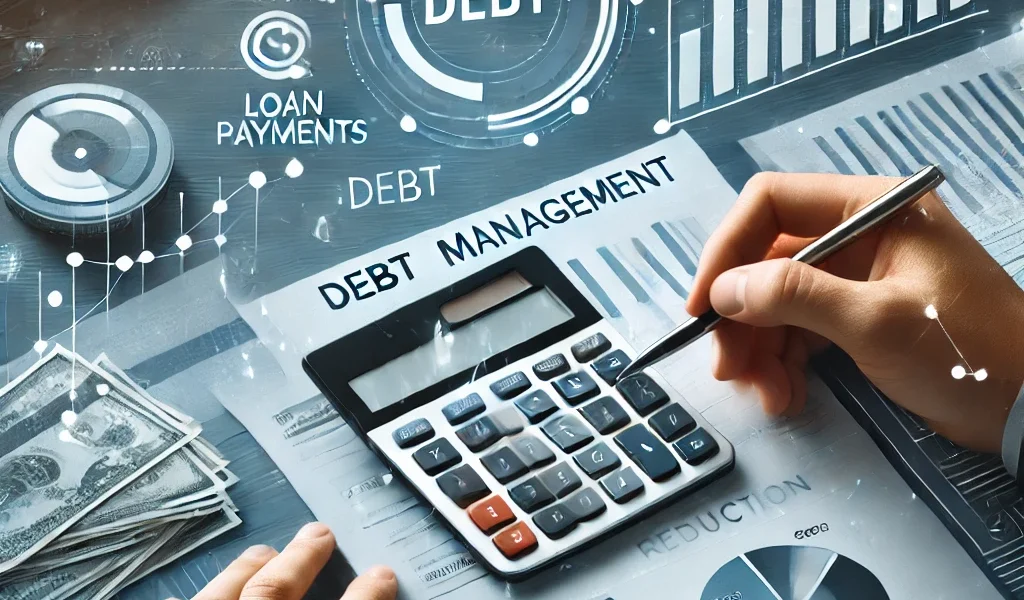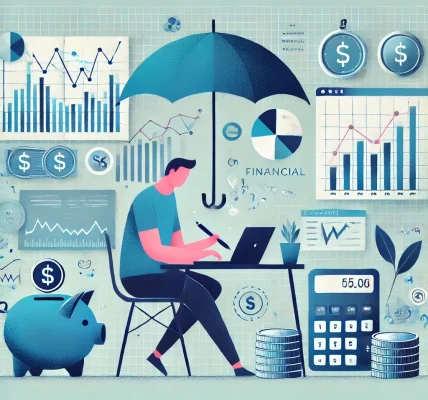Introduction
Managing debt effectively is a crucial part of financial well-being. Whether it’s student loans, credit card debt, or a mortgage, having a structured plan to pay off loans faster can save you thousands in interest and reduce financial stress. In this article, we will explore actionable debt management strategies to help you achieve financial freedom efficiently.
Understanding Your Debt
Before you start paying off your loans, it’s essential to assess your debt situation:
- List All Your Debts: Include details such as loan type, interest rate, balance, and minimum payment.
- Calculate Your Debt-to-Income Ratio (DTI): Divide your total monthly debt payments by your gross monthly income. A lower DTI is preferable for financial stability.
- Understand Interest Rates: High-interest debt, like credit cards, should be prioritized to avoid excessive interest payments.
Strategies to Pay Off Loans Faster
1. The Debt Snowball Method
The debt snowball method involves paying off the smallest debt first while making minimum payments on others. Once the smallest debt is cleared, move to the next smallest.
Pros:
- Provides quick wins that boost motivation.
- Creates positive momentum.
Cons:
- May not save as much on interest compared to other methods.
2. The Debt Avalanche Method
This method prioritizes paying off the debt with the highest interest rate first while making minimum payments on other loans.
Pros:
- Saves the most money on interest.
- Reduces overall debt burden faster.
Cons:
- It may take longer to see progress compared to the snowball method.
3. Make Biweekly Payments
Instead of making monthly payments, split your payment in half and pay every two weeks. This results in an extra payment each year, reducing interest over time.
Example:
- Monthly mortgage payment: $1,000
- Biweekly payment: $500 every two weeks
- Extra payment per year: $1,000 (one additional full payment)
4. Increase Your Monthly Payment
Even a small increase in your monthly payment can significantly reduce your loan term and interest paid.
Example:
- Loan amount: $10,000 at 5% interest (10-year term)
- Monthly payment: $106
- Increasing payment to $150 shortens the repayment term and reduces interest.
5. Consolidate Your Debt
Debt consolidation involves combining multiple loans into a single loan with a lower interest rate. This makes repayment more manageable and can save money.
Options:
- Personal loans
- Balance transfer credit cards
- Debt consolidation loans
Caution: Ensure that consolidation does not result in higher overall interest costs.
6. Refinance High-Interest Loans
Refinancing replaces an existing loan with a new one at a lower interest rate, reducing the total amount paid over time.
Best for:
- Student loans
- Mortgages
- Auto loans
Important Considerations:
- Check fees and terms before refinancing.
- Ensure you qualify for better rates.
7. Utilize Windfalls and Extra Income
Use unexpected money like tax refunds, bonuses, or gifts to make lump sum payments toward your debt.
Example:
- Receiving a $2,000 tax refund and applying it to a credit card balance can significantly lower interest payments.
8. Cut Expenses and Redirect Savings to Debt
Reducing discretionary expenses frees up money for debt repayment. Strategies include:
- Canceling unused subscriptions
- Cooking at home instead of dining out
- Negotiating bills and insurance rates
9. Earn Extra Income
Increasing your income allows you to pay off debt faster. Consider:
- Freelancing or side gigs
- Selling unused items
- Asking for a raise
- Renting out property or assets
10. Seek Professional Help if Needed
If you’re struggling with debt, consider consulting a financial advisor or a credit counseling agency. They can help you:
- Create a personalized debt repayment plan.
- Negotiate with creditors for better terms.
- Avoid bankruptcy and debt settlement scams.
Common Mistakes to Avoid
- Making only minimum payments: This prolongs debt repayment and increases interest costs.
- Ignoring high-interest debt: Paying off low-interest loans first can cost more in the long run.
- Using new credit: Taking on additional debt while repaying existing loans can slow progress.
- Not reviewing loan terms: Be aware of prepayment penalties and hidden fees.
Conclusion
Paying off debt faster requires discipline, strategy, and smart financial decisions. By choosing the right method, cutting expenses, and increasing income, you can regain control of your finances and achieve debt freedom sooner. Start implementing these strategies today and take a step closer to financial security!


